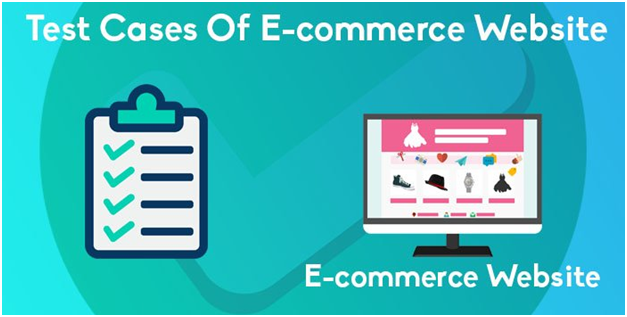
Test cases fall under a vital part of QA best practices because they directly or indirectly influence the whole process of quality assurance. When a product is under development each and every stage has to be quality checked before it is moved to production. For Ecommerce websites, every page in the website matters for the website quality and business
Quality assurance (QA) testing is an essential and crucial part of any e-commerce application release or update. It is required to ensure the functionality, usability, and compatibility of the application. Creating effective QA test cases that are designed to properly verify and validate the features of your e-commerce application are the keys to success.
Identify your website features and functions.
Before you can begin creating QA test cases, you first need to identify all your website features and functions. This includes the core functionalities like searching, browsing, adding items to the cart, checkout, etc. Once you have an idea of what features need testing, you can then create test cases based on their specific needs. Make sure to also consider user experience when designing tests — are there any potential errors that could disrupt the user’s flow? These must be accounted for as well when planning out your QA test cases!
Dictionary the data you need to test.
Before creating test cases, it is important to consider the data that needs to be tested. Dictionary out all the data you will need for each test case and ensure any new data is available and can be queried correctly. This process helps in understanding what kind of data should be generated or which existing data should be updated before carrying out the testing process. Furthermore, by having access to real environment data, the accuracy of tests can be improved drastically.
Develop software tests based on the scenario.
After understanding the data, software tests must be developed based on the scenario of the application. Try to create test cases that cover all possible user journey scenarios such as logging in and out, submitting forms, making payments, etc. Additionally, it’s important to create tests that are user-friendly, efficient, and automated when applicable. Automation can help alleviate resource strain when running multiple tests at once. To ensure individual test cases are successful, it is important to track the status of each one as they are tested.
Execute tests, monitor results, and analyze them.
After Quality Assurance tests have been written, they must be run to determine whether the website or app is functioning as expected. Ensure testers are tracking each result and organizing them accordingly — this will expedite the debugging process should something go wrong. Once tests have been executed, review each result and compare it to the original expectations set forth in the test case. If the results match expectations then the test was successful, if not then don’t stop! Until all issues have been resolved ensure every bug is identified, documented, and fixable with code changes.
Let’s take some scenarios into consideration:-
Home page
The home page is the starting point of any application. When a user first enters the site they actually see the home page which acts as a deal breaker or maker to the site. The home page should be crisp and neat and not too loaded with content.
- A major aspect to check on the home page is loading time.
- The auto-scrolling feature is present or not?
- How much time is being taken to change the slides?
- How long are the tabs take to open and if it is working properly?
- Are the interactive features of the website functioning properly?
Search feature
The search feature is an important aspect of the E-commerce project because it influences the user experience to a huge extent. The search option on the site should possess filtering capabilities to find the clients exactly what they are looking for.
- If the drop-down list comes with the proper names of items.
- If the name is wrong or there is a typing error, will the search list show the corrected recommendations?
- How much time searching feature take to display the contents?
- Will it rectify the typing mistakes and show the corrected names?
- On typing the wrong name, will the search list show the corrected name or not?
The search feature is directly associated with the user experience of the site. Customers are heading towards an eCommerce site mainly to make a purchase from their collection. So if the search option itself is giving them a hard time, then the targeted audience will eventually lose interest in making a purchase.
Product description page
The following features are to be checked on the product description page
- If the relevant information is showing on the page
- The delivery destination verification option is present on the page
- The picture of the product is enlarging on clicking
- The price of the product is displayed
- Delivery options are displayed
- Shipping information is displayed
- The review section is functioning.
- Out-of-stock or In stock, information is shown on the page.
Shopping cart features
The following features are to be checked in the product Shopping cart
- Is the checkout option working or not?
- The continued shopping option is working or not?
- All items are displayed that were added to the cart.
- If one item is added twice, the number of the item present is showing the amount correctly.
- Apply coupon section is functioning.
- The price calculation is done correctly.
- The add-ons like taxes, shipping charges, etc. are displayed separately along with the individual price of the product.
- The removed item from the cart option is working.
- Check if the site is retaining all the products added to the cart if the user is leaving the page in between.
Payment options
Features to be checked in Payment options
- If all the payment options present are working properly.
- On clicking on a particular payment option, the extra charges required for that one are displayed correctly.
- Storing online payment option is working.
- Offers available on choosing a particular mode of payment are displayed with all the correct information.
- Security is maintained in this area because clients are entering their personal information into the e-commerce site.
Different types of testing processes for e-commerce.
- Functional Testing
- Usability Testing
- Security Testing
- Performance Testing
- Database Testing
- A/B testing.
Functional testing is a type of software testing that validates the software system against the functional requirements/specifications
- Mainline functions: Testing the main functions of an application
- Basic Usability: It involves basic usability testing of the system. It checks whether a user can freely navigate through the screens without any difficulties.
- Accessibility: Checks the accessibility of the system for the user
- Error Conditions: Usage of testing techniques to check for error conditions. It checks whether suitable error messages are displayed.
Usability testing is a method used to evaluate how easy a website is to use. The tests take place with real users to measure how ‘usable’ or ‘intuitive’ a website is and how easy it is for users to reach their goals.
Types of usability testing
- Comparative Usability Testing
- Explorative Usability Testing
Security testing: It is a type of Software Testing that uncovers vulnerabilities, threats, and risks in a software application and prevents malicious attacks from intruders. The purpose of Security Tests is to identify all possible loopholes and weaknesses of the software system which might result in a loss of information, revenue, and reputation at the hands of the employees or outsiders of the Organization.
Types of security testing – Vulnerability Scanning, Security Scanning, Penetration Testing, Risk Assessment, Security Auditing, Ethical hacking, Posture Assessment
Performance testing checks the speed, response time, reliability, resource usage, and scalability of a software program under its expected workload. The purpose of Performance Testing is not to find functional defects but to eliminate performance bottlenecks in the software or device. Types of Performance testing – Load testing, Stress testing, Endurance testing, Spike testing, Volume testing, and Scalability testing.
Database Testing is checking the schema, tables, triggers, etc. of the database under test. It may involve creating complex queries to load/stress test the database and check its responsiveness. It Checks data integrity and consistency.
A/B testing (also known as split testing or bucket testing) is a method of comparing two versions of a webpage or app against each other to determine which one performs better. AB testing is essentially an experiment where two or more page variants are shown to users at random, and statistical analysis is used to determine which variation performs better for a given conversion goal.
Read more of our informative and insightful Blogs on Trending Technology and Management on Medium.
